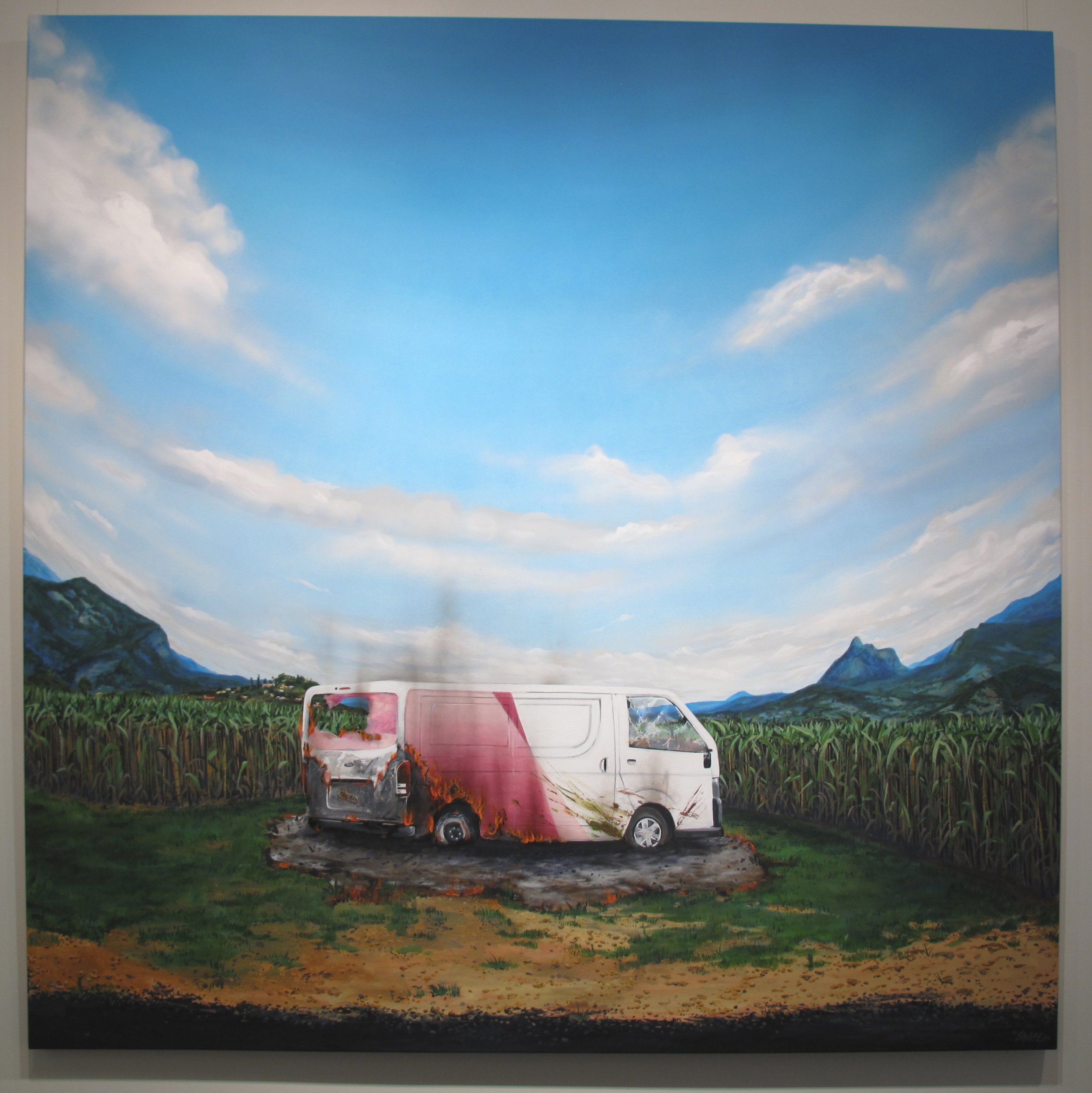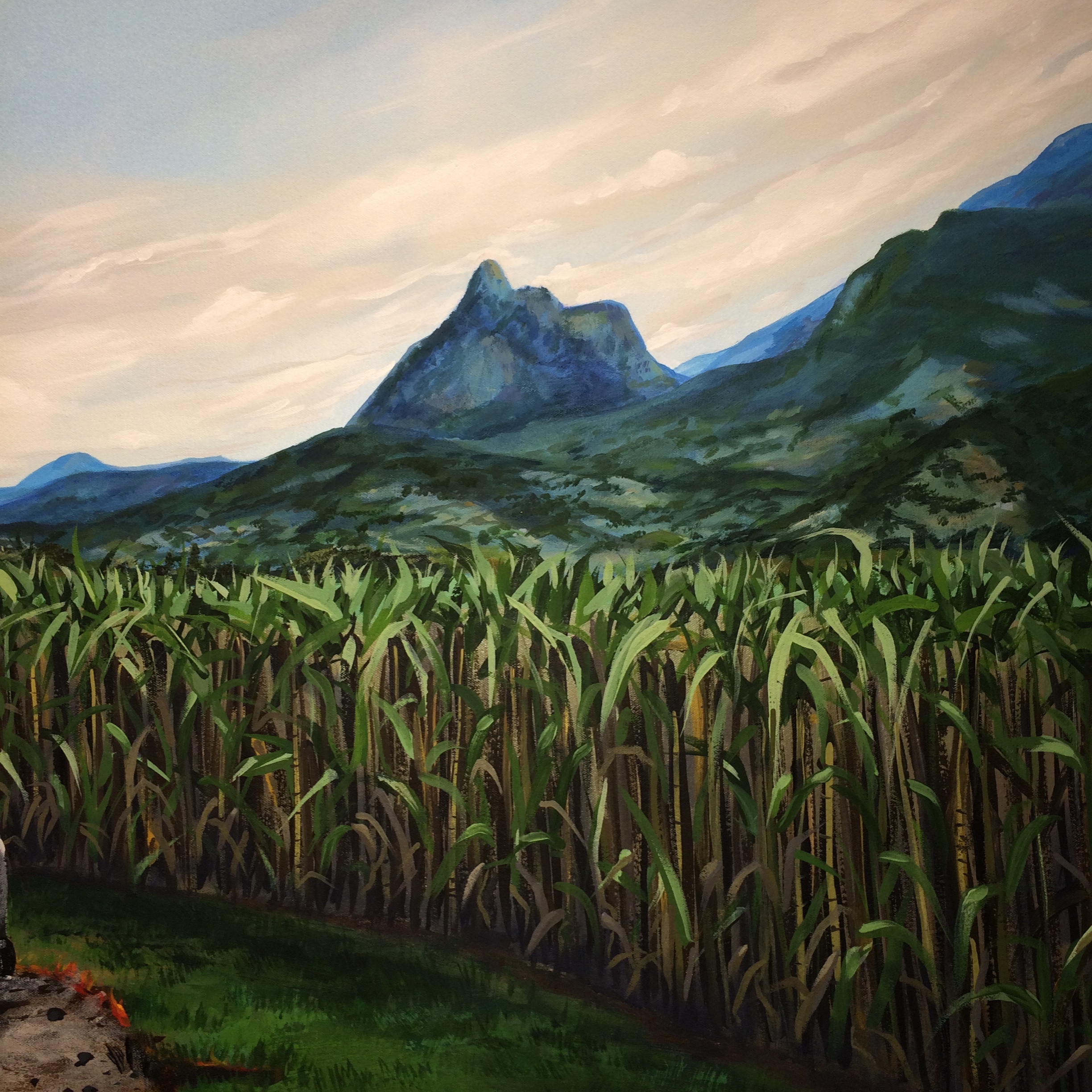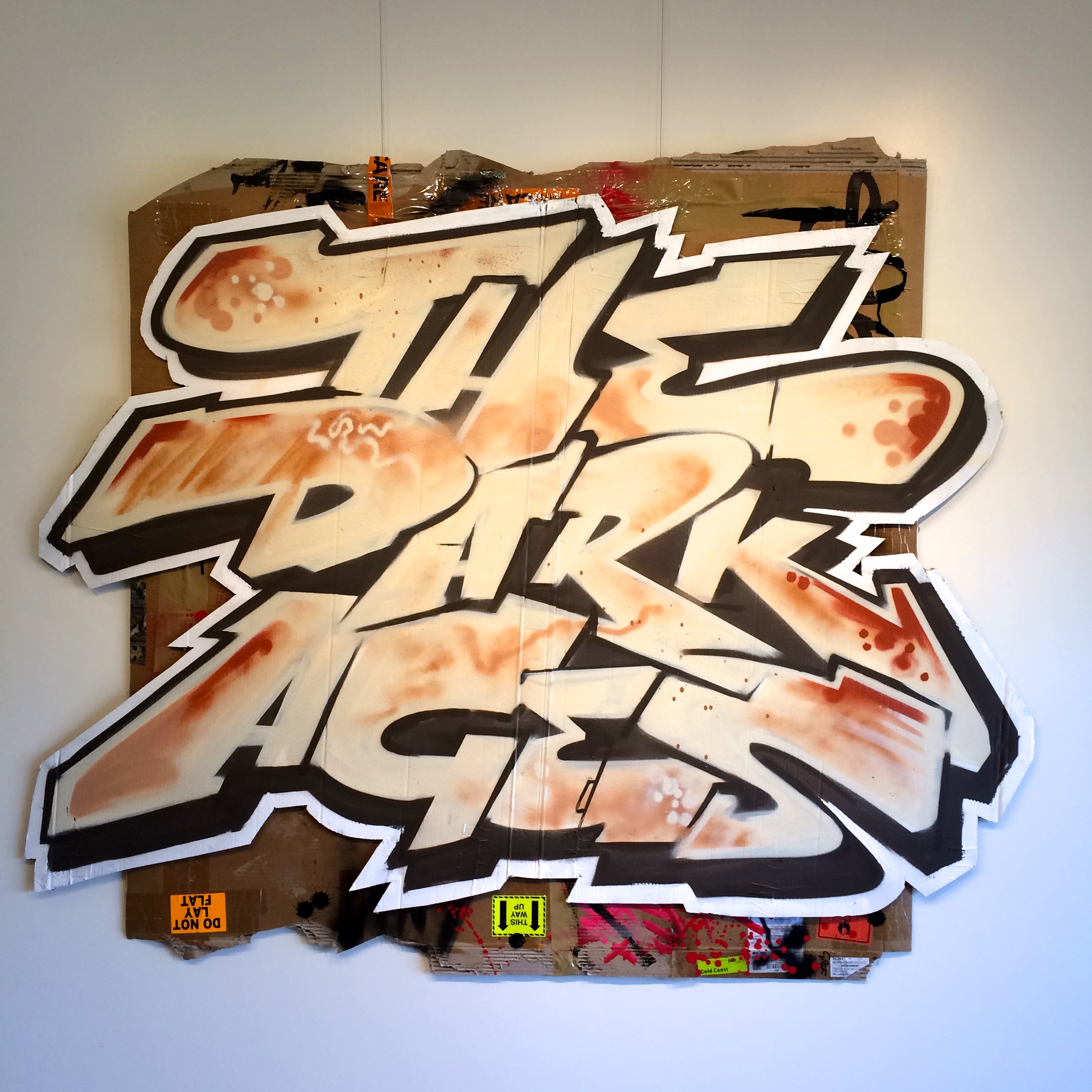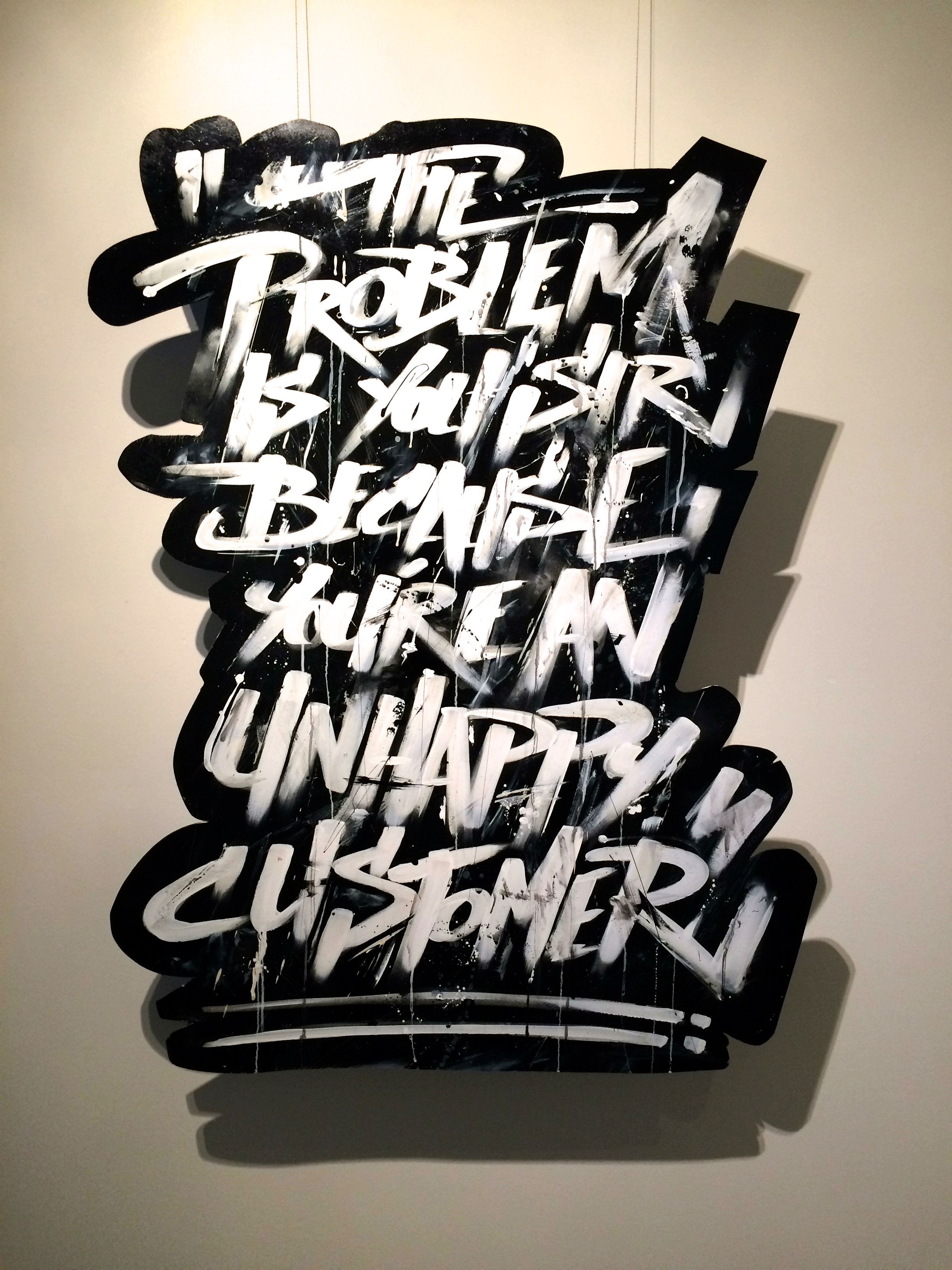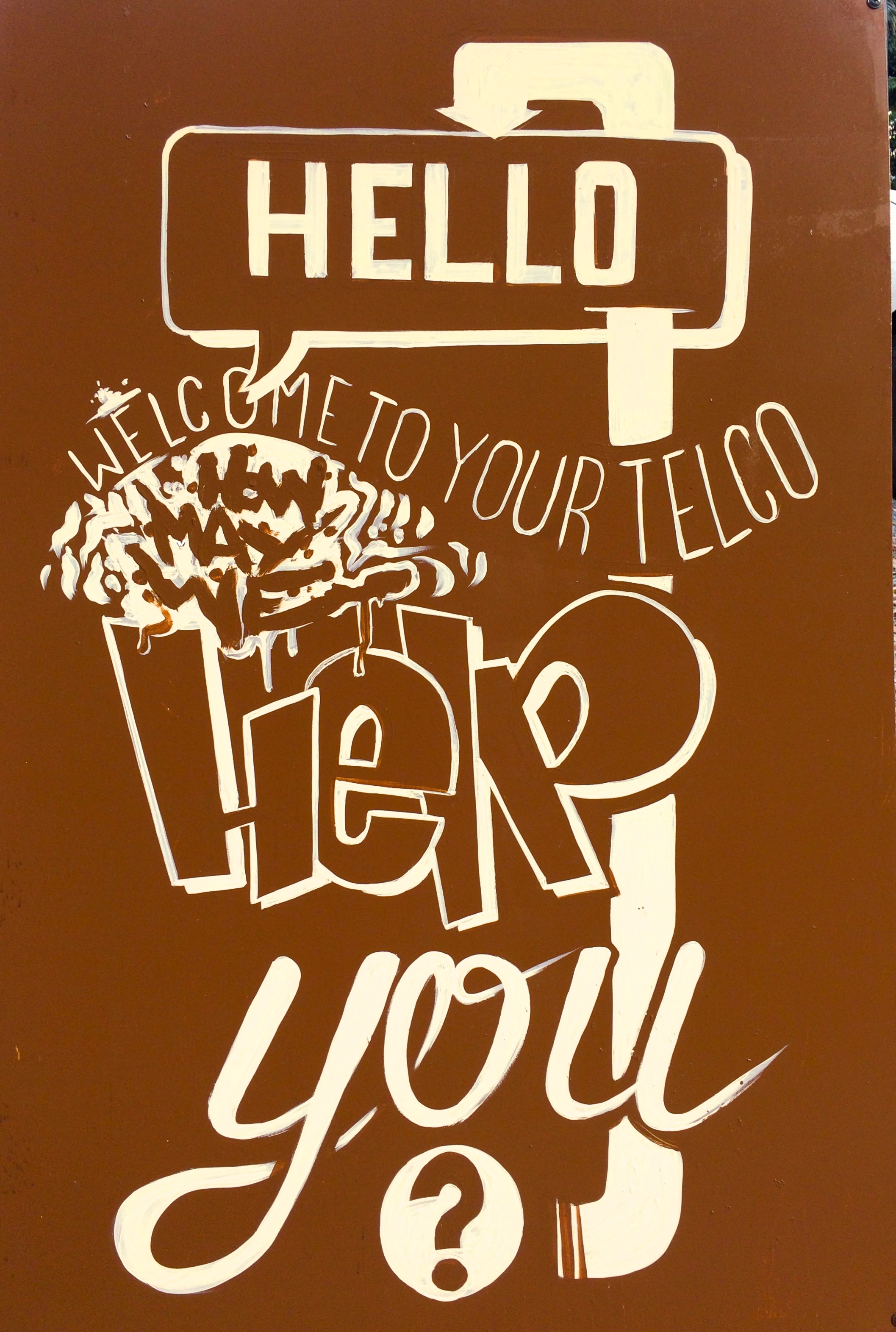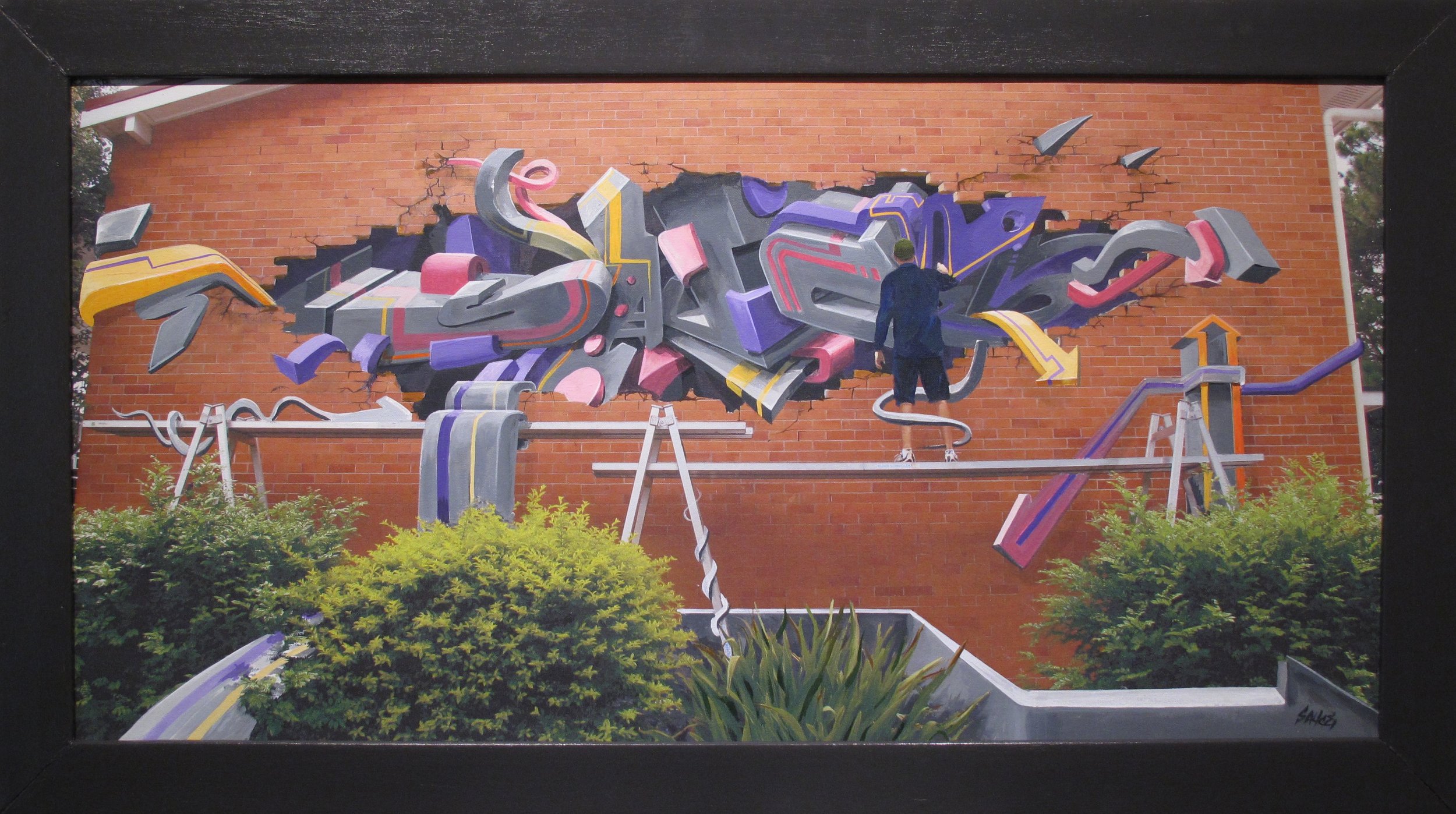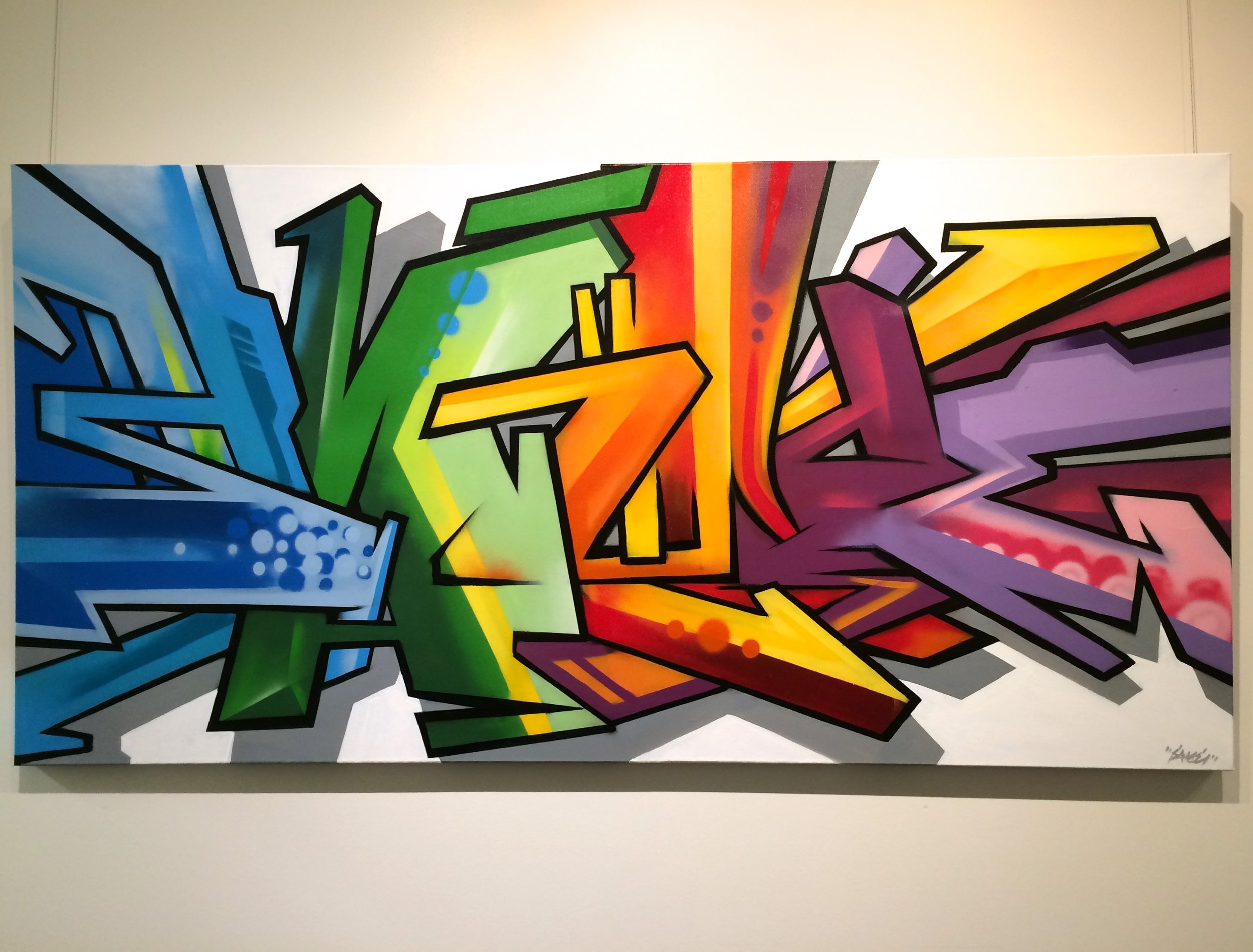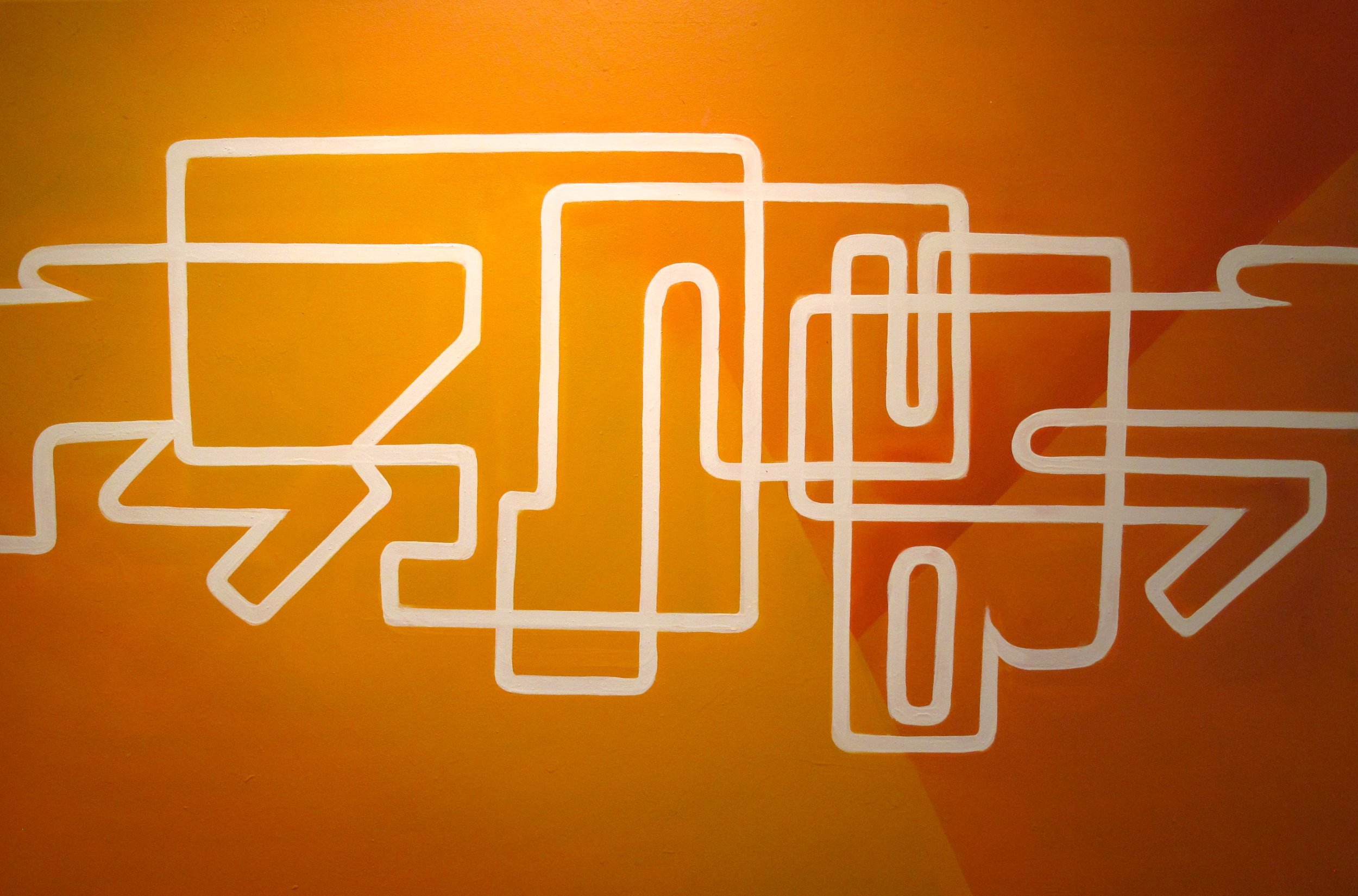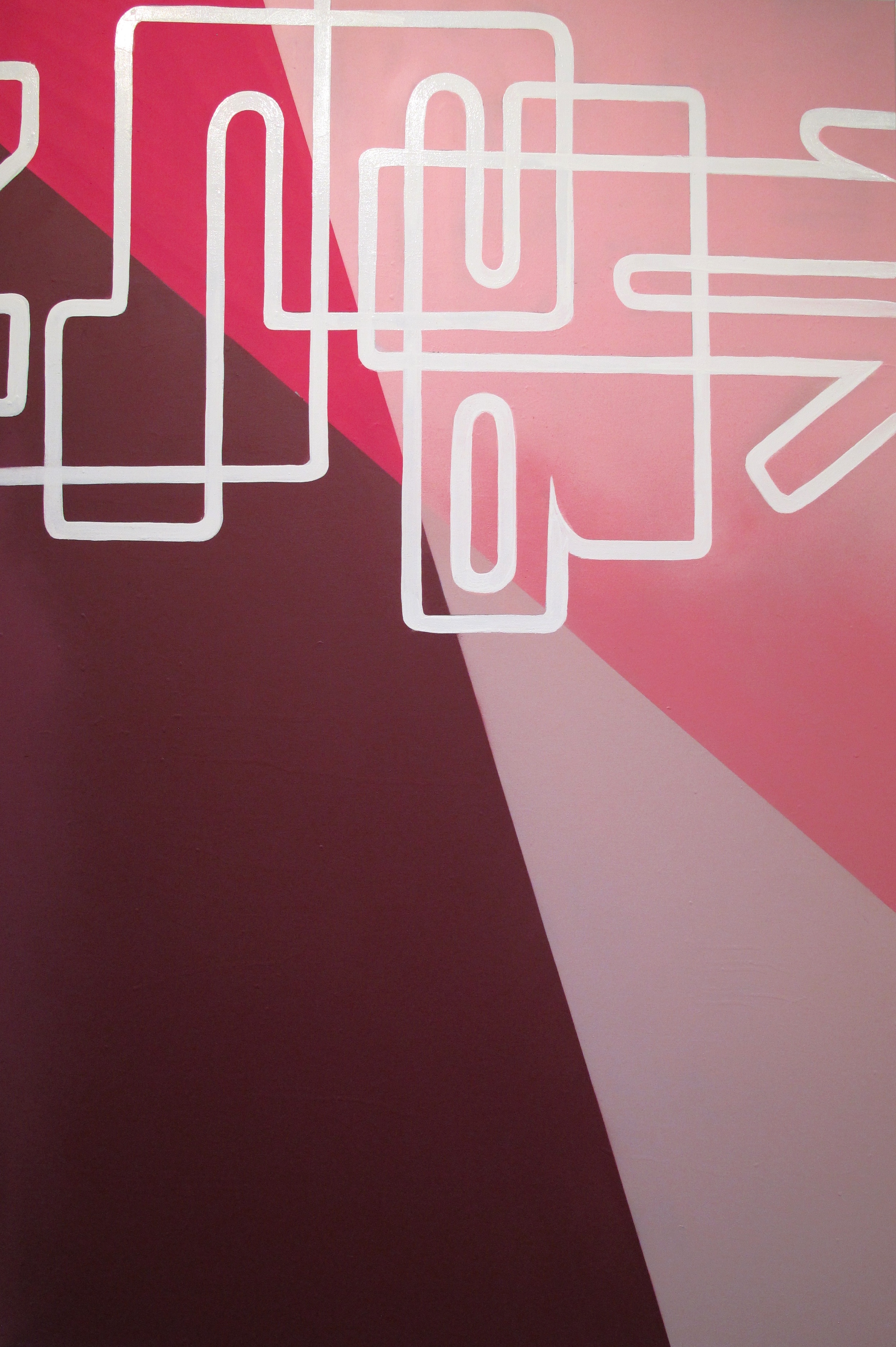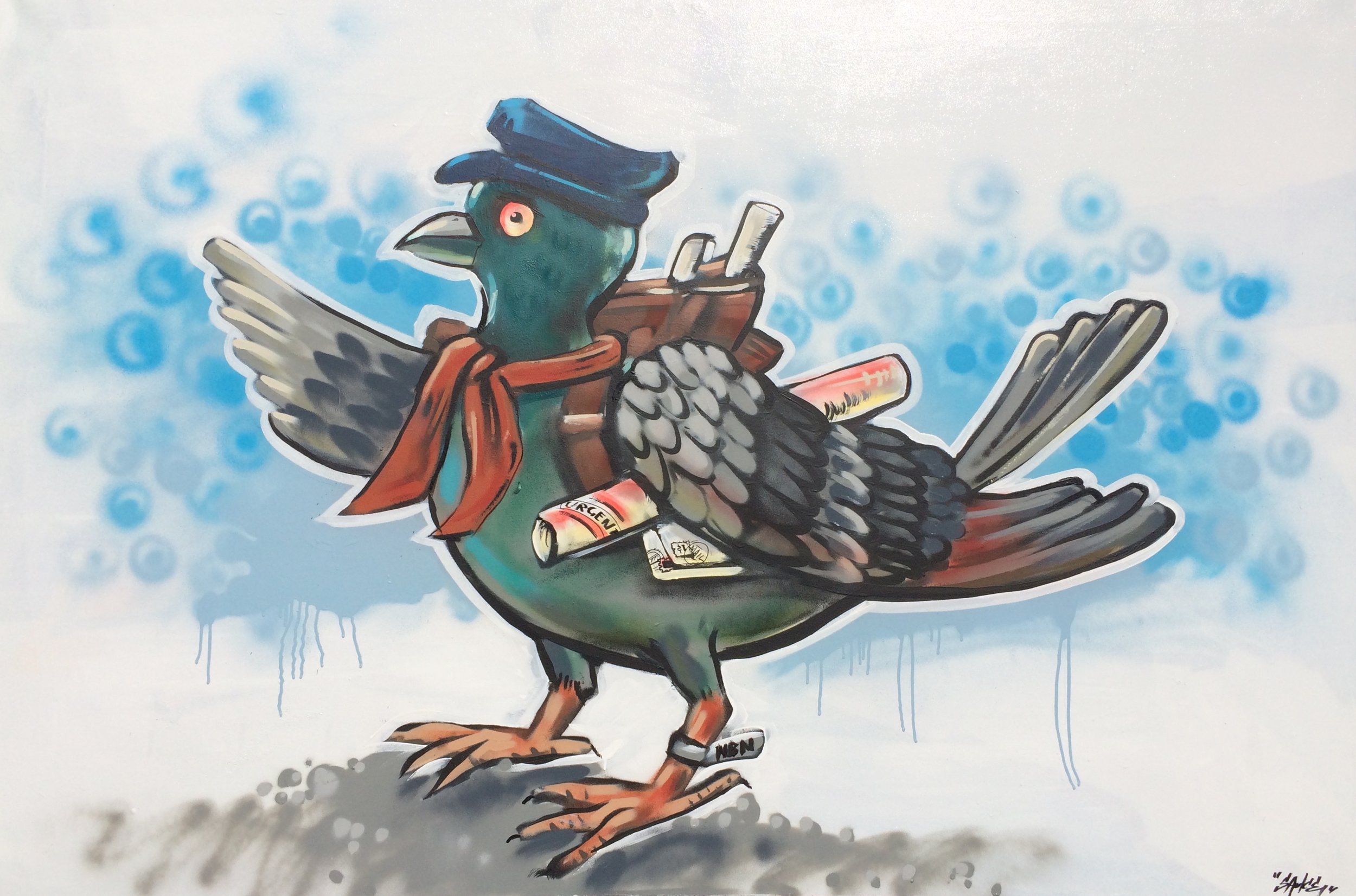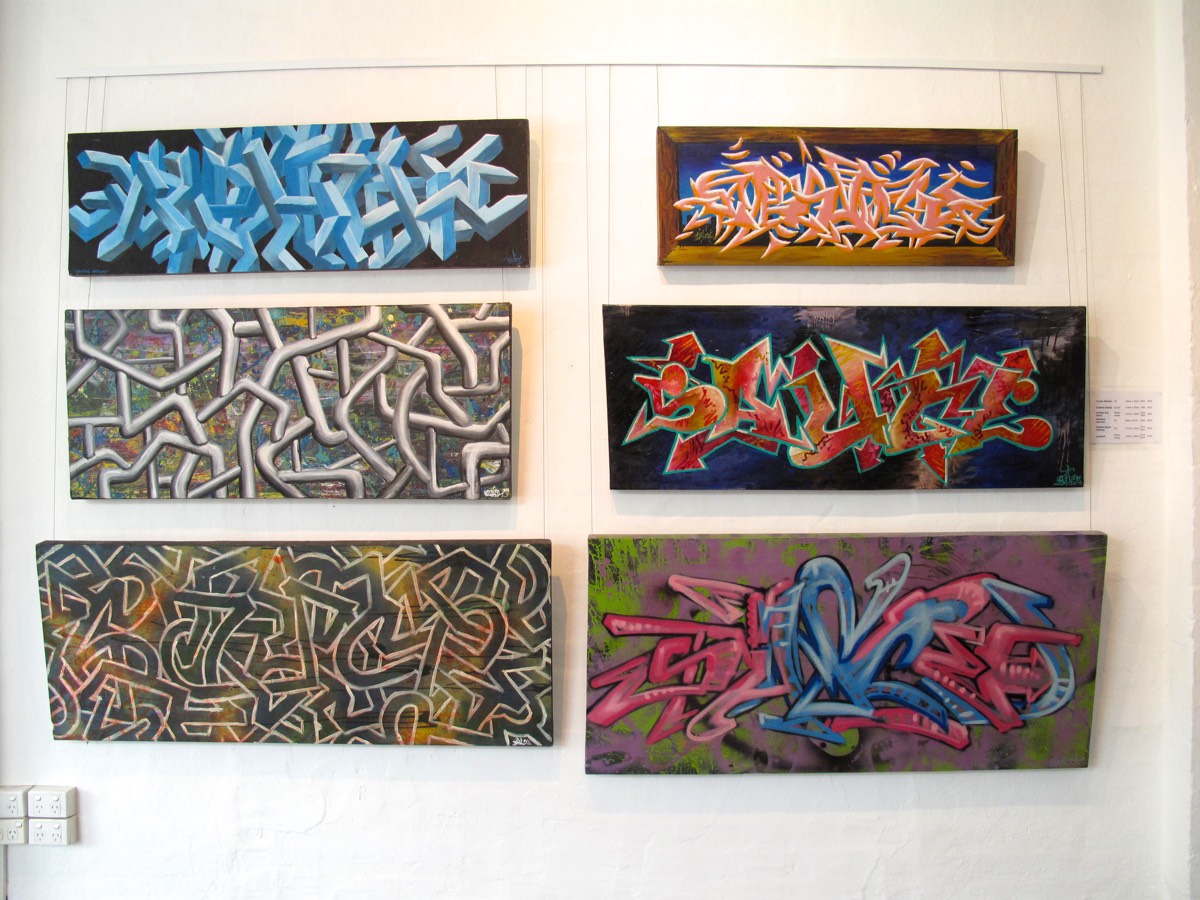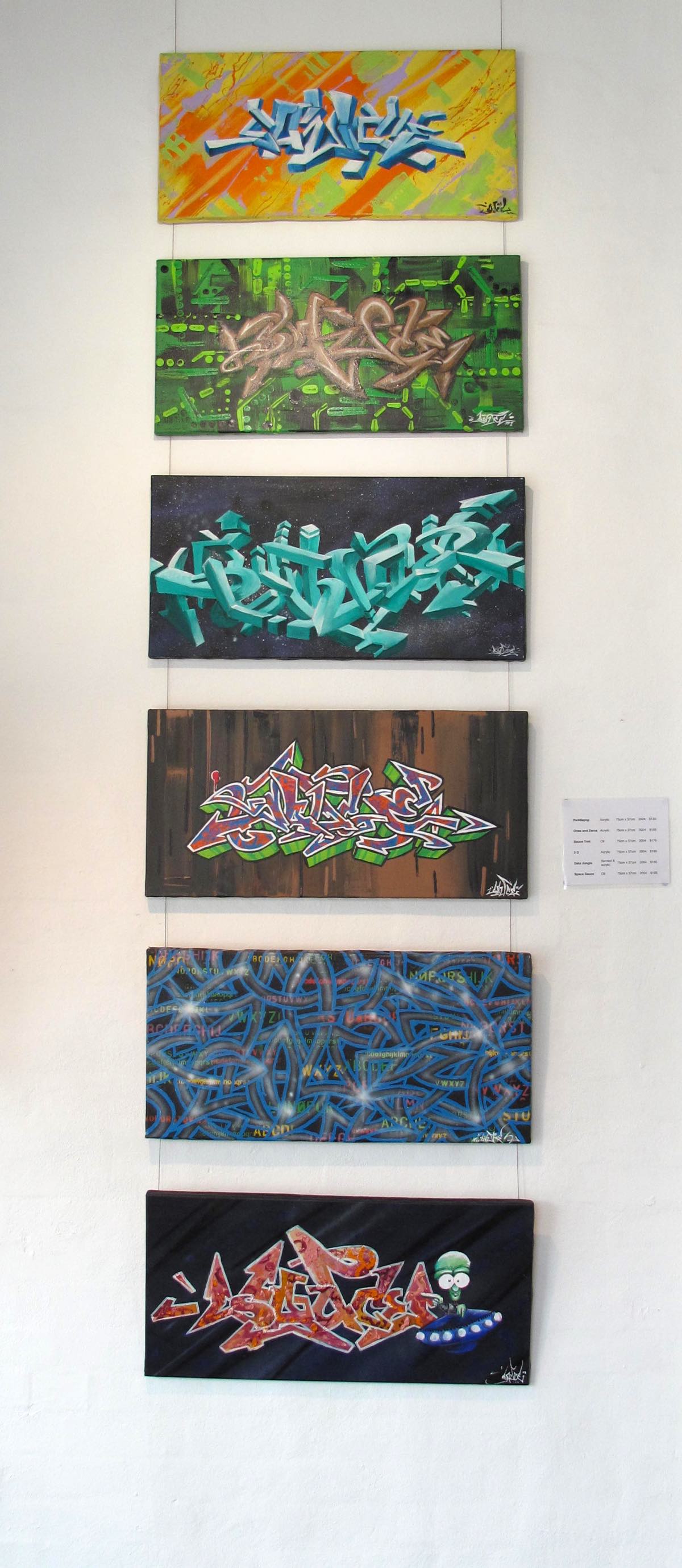Convergence
/Abstract forms collide with elements of nature where notions of familiarity are both endorsed and challenged. The imagined and realistic harmonise through the juxtaposition of themes.
Five Letters
/Five Letters was a solo retrospective for aerosol artist, Sauce. Sauce started sketching and painting the back of factory walls in 1994 and his back catalogue is filled with images which represent graffiti lettering and hand-style tags. Five Letters was not about showcasing gentrified graffiti, rather it was a celebration of Sauce’s roots and the ‘good old days’ when painting was about riding the lines and using whatever paints you could get your hands on.
Three Sixty Five
/
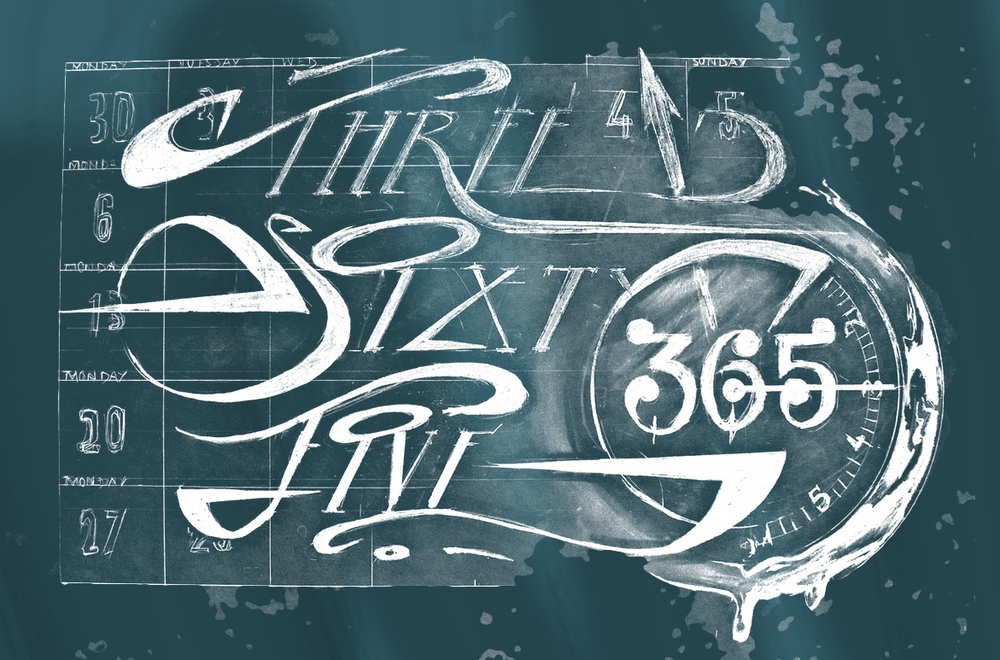
Three Sixty Five explores the highs and lows of an aerosol artist over a one year period. During the Wet Season of 2012/13 Sauce and Ainslie Rose spent too many days cooped up inside and spent long mornings talking over coffee about ‘what would be really cool’. It was from these heartfelt conversations the pair decided they needed to be the change and not the problem, and thus, The Sauce Studio was created. The Sauce Studio was meant to be the catalyst Murwillumbah and the Northern Rivers needed in regards to aerosol and contemporary art.
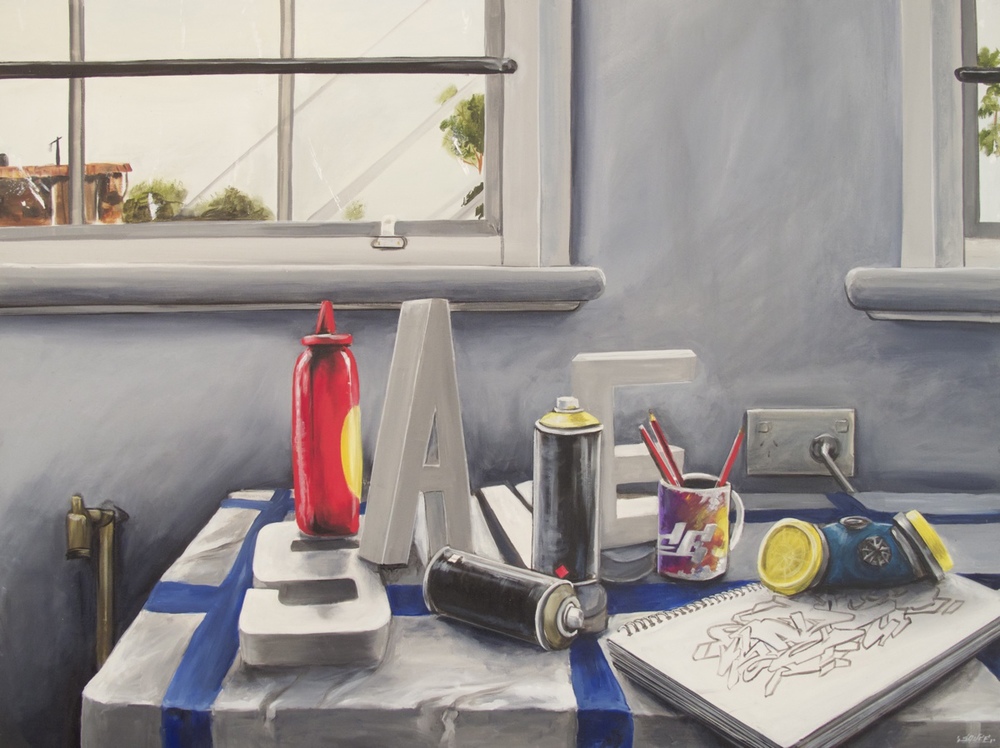
Still Lifeless, oil on canvas, 122cm x 91.5cm. Sauce, 2014.
Since opening last March, Sauce and Ainslie Rose have used the workshop and showcase to meet new friends and create new artworks, but it hasn’t been all beer and skittles for the creative couple. A large part of the challenge has been navigating through the bureaucracy associated with public art and murals. Sauce has worked with over eighty schools and has over a decade of professional experience, but he is still dictated to by public servants who know little if anything about public art. The bureaucracy isn’t usually site specific, that is, most large scale organizations and councils have the same level of paperwork and inane demands, however recent experiences with councils have taken the bureaucracy and flagrant stupidity to a new level.
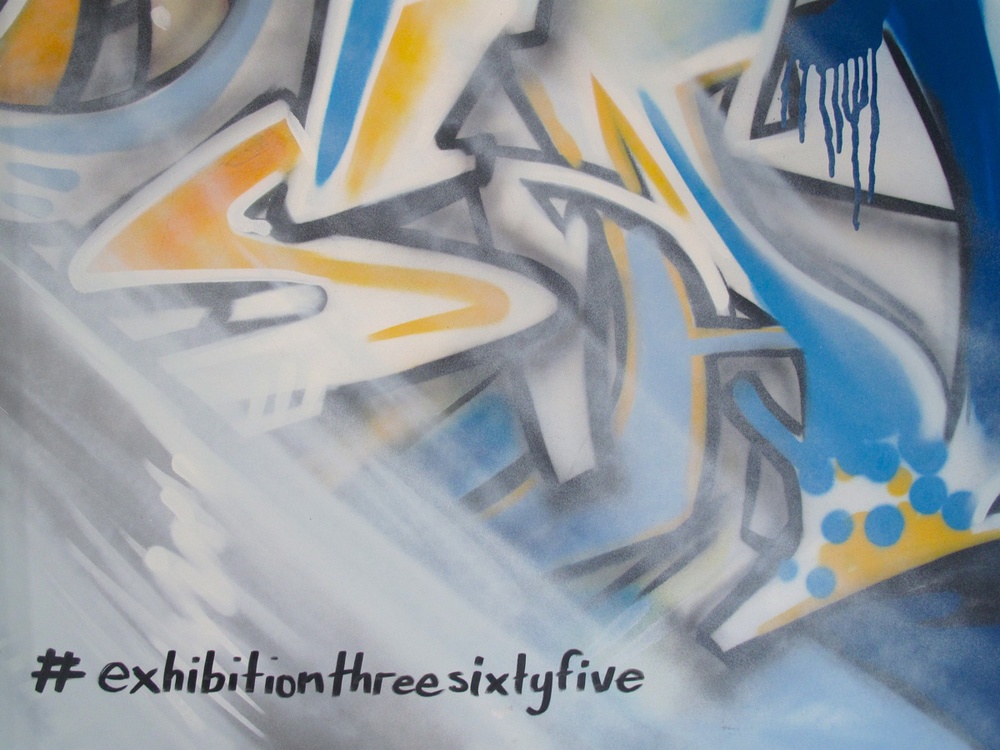
#exhibitionthreesixtyfive, aerosol on found object. Sauce 2014.
This paper-trail full of maintenance schedules, risk management plans, design briefs, and selection criteria may be a part of everyday life for the myriad of Cultural Development Officers, but it doesn’t denote high quality art, nor extrapolate cultural innovation; except when this is used as inspiration for an exhibition. It is these experiences of tribulation and encumbrance which has fueled this creative output. This exhibition serves as a metaphor for the challenges faced by a professional aerosol artist. The Sauce Studio arose out of dissatisfaction for the hegemonic demands of traditional gallery expectations and tokenistic public art projects and this celebration one year of operations in Murwillumbah exemplifies the positivity and success.
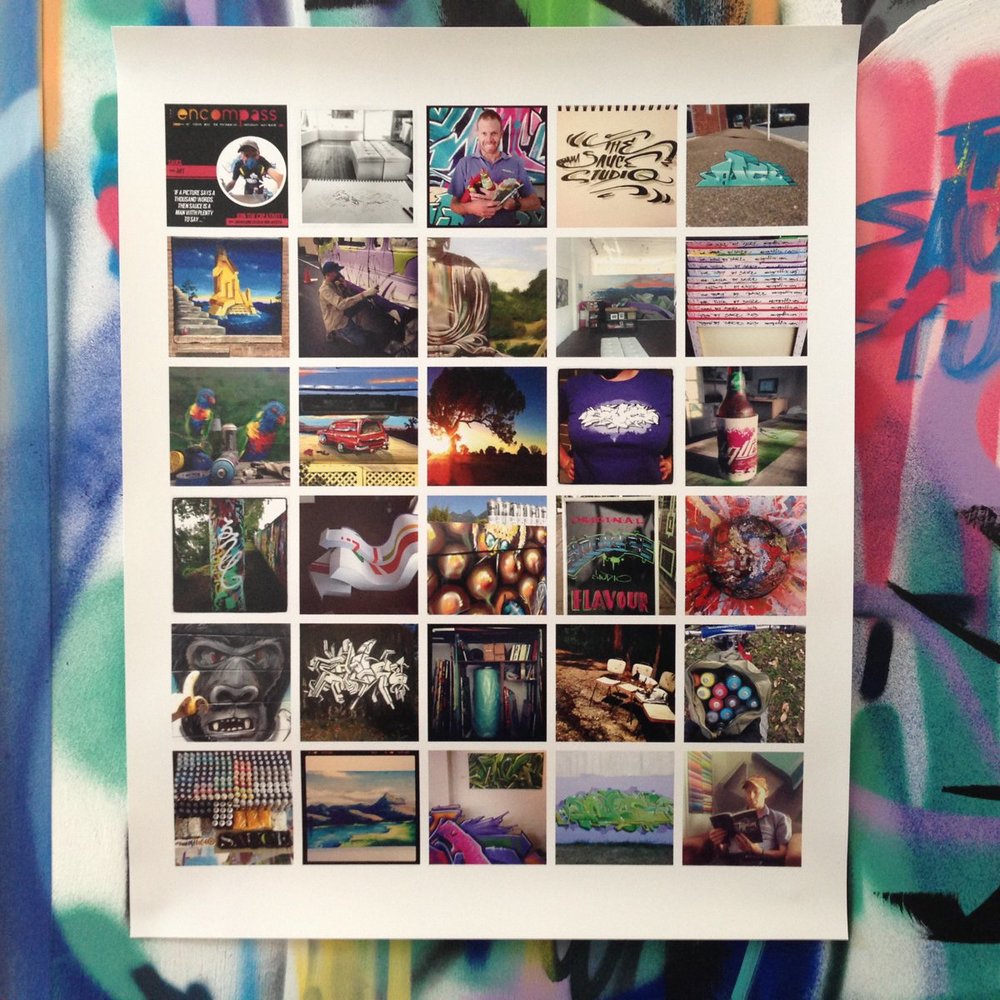

Retrospective Self-portrait, acrylic on canvas, 76cm x 30cm. Sauce 2014.
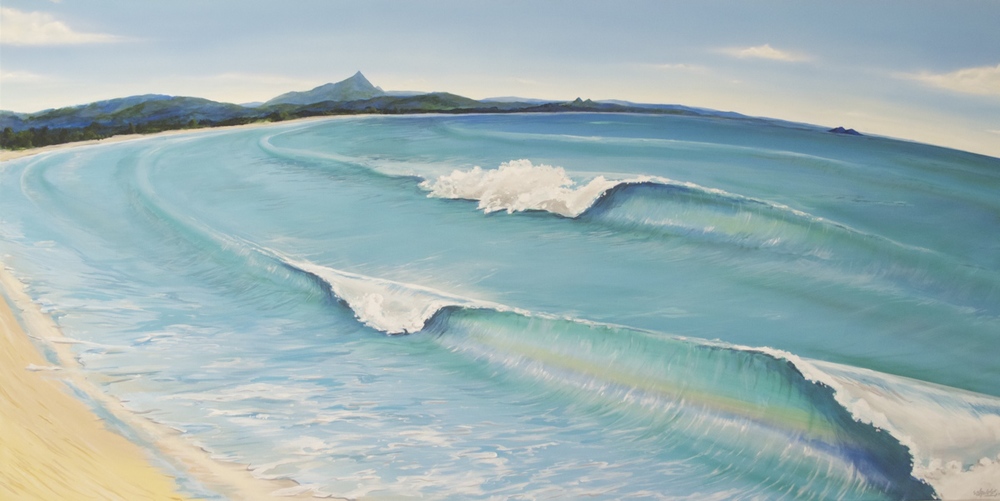
From the Wreck, acrylic on canvas, 183cm x 91.5cm. Sauce, 2014.
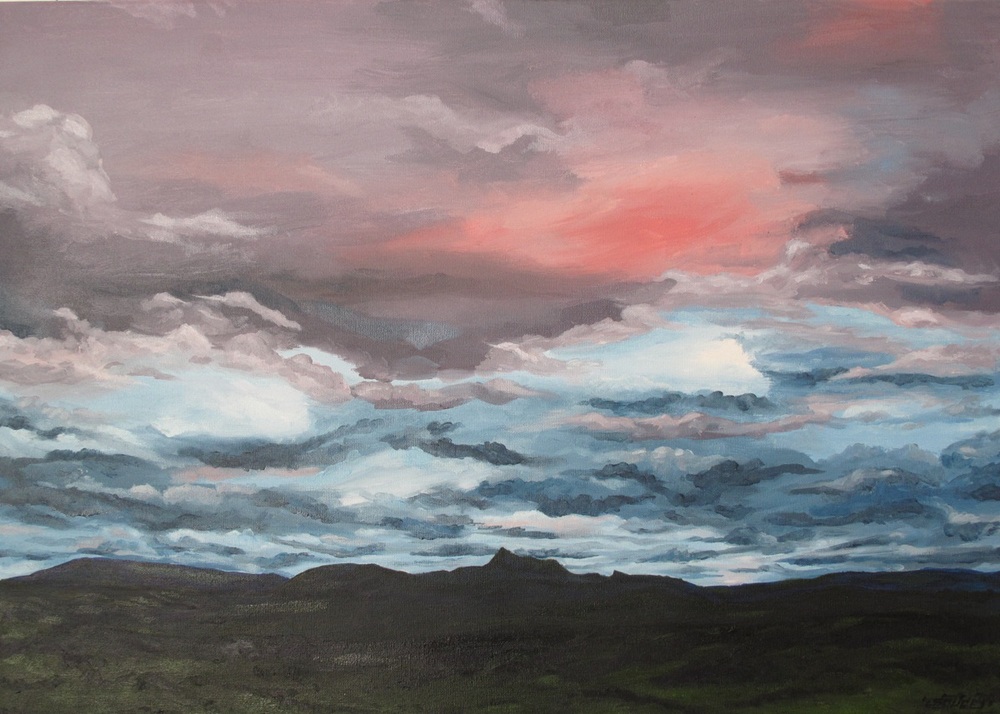
Overcast Enlightenment, oil on canvas, 70cm x 50cm. Sauce 2014.
Stains of Modernity
/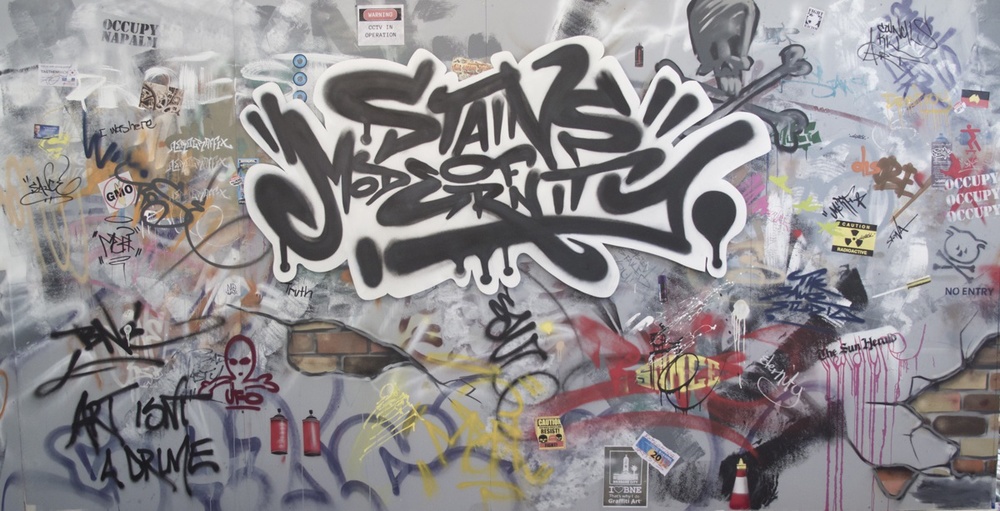
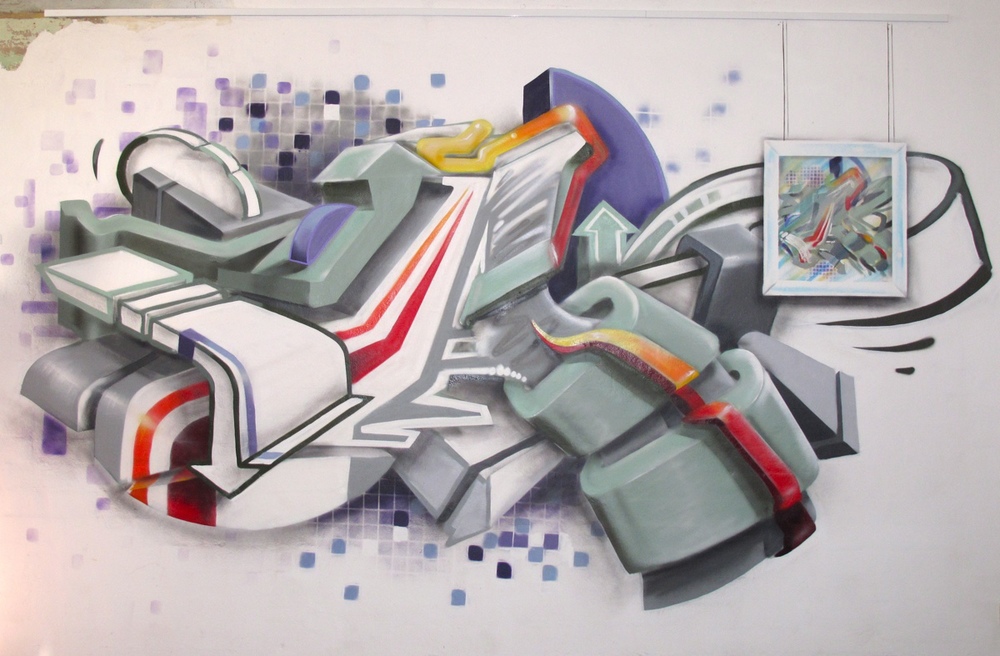
High Modernity, Post Modernity, Post Modernism, Post-Post Modernism, these are the times we live in. Pontificating about art and high culture will only go so far, it doesn’t address the bigger issues and is inaccessible to the wider population. Art is more than oils on canvas which are hung in well lit and over funded galleries. Graffiti embodies the notion of doing art as an act of expression as opposed to the more palatable and tamed visuals of the gallery market. Graffiti is more than just paint on walls from some young hoodlums. It’s a part of a culture and a way of life. Humans have been making their marks on walls from the beginning of history and the typography scrawled over the urban environment is just an extension of this.

This Hip Hop culture is evolving over time and is a part of the urban identity. It is this identity which creates a new history and a new narrative. Hip Hop grew out of the disquiet of New York and the American streets during the 1970s. It’s often associated with crime and violence, but true Hip Hop is anything but violent. It’s about battling to be the best and earning respect from your peers by honing your craft and perfecting your style. It’s peaceful, respectful and skillful. Flash-forward to now, and Australians have their own take on Hip Hop. It’s more about mates, larrikins and beer. The music talks more about politics and BBQs than bitches and homies, but there’s still a good dose of competition and testosterone. And graffiti is just one of the four elements which is celebrated and elevated by this competition. By eradicating graffiti and aerosol art from our streets, marginalizing it and calling it a crime is sheer ignorance.
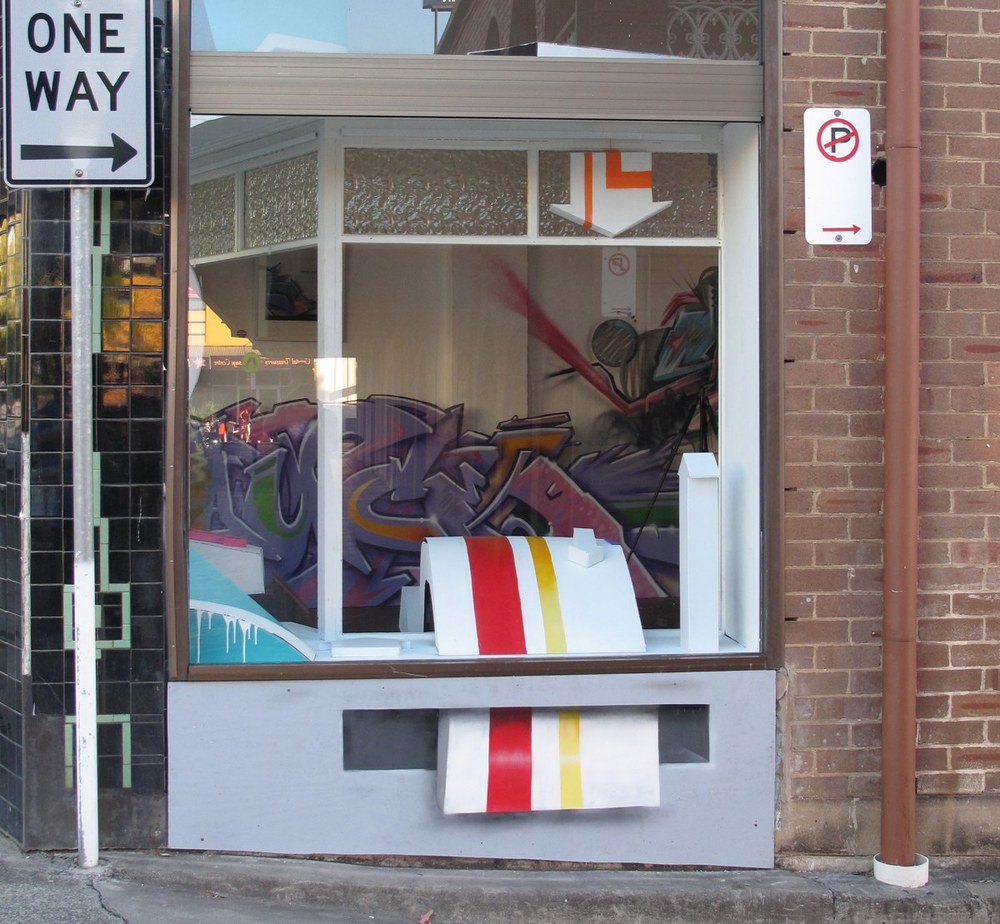
The beginning of modernity saw immense change and the industrialization of the Western world. This industrial change is responsible for the creation of the aerosol can and the colours which are now accessible and neatly packaged. Modernity also reinforced the bureaucratic and hierarchical social structures which seek to marginalize and denigrate anything with unique thought, thus making graffiti the best weapon against this concrete and urbane landscape. Graffiti is as old as time itself, and now the tools are pre-packaged and readily available.



